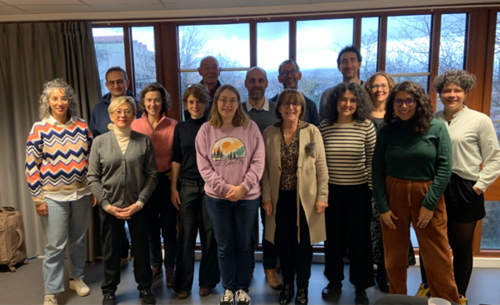Use the drop-down summary to access the articles in the folder.
Terms of republication
You can republish this article for free on your website, blog, etc.
Behind the scenes of research
EQUIPACT brings together a consortium as diverse as the world of participatory research itself. Academic researchers from LISIS, the Maison des Sciences de l’Homme SUD and the CNRS Zones-Ateliers network, as well as third sector research organisations: the Toulouse Natural History Museum, Le Dôme, the Caen Normandy science centre, the botanists’ network Tela Botanica, Les Petits Débrouillards Île-de-France, the Crefad network, Mediterranean Food Territories Laboratory FAB’LIM, TRACES and the RESOLIS observatory.

Credit: EQUIPACT
Strengthening the role of civil society in participatory research
The CSO members of the consortium are seniors in relations between science and society. They have experienced difficulties and even project failures. The most problematic issue is funding. While they receive public subsidies for the services they provide to society, their research/innovation activities are neither recognized nor funded. For this reason, the Fonds de coopération de la jeunesse et de l’éducation populaire (Youth and Popular Education Cooperation Fund) experimented a new instrument to support associations in participatory research activities. Within 3 years of funding, we observed a legitimation of CSOs as actors of participatory research projects.
Choosing action research for tangible results
Every day, the EQUIPACT partners experimented with participatory research tools while documenting and analysing existing approaches. The team does not intend to limit itself to scientific publications. Through action research, their aim is also to share methods and results within their networks. This should strengthen the involvement of civil society in the research and innovation system.
![[Translate to English:] Licence creative commons BY-SA 4.0 [Translate to English:] Licence creative commons BY-SA 4.0](https://reflexscience.univ-gustave-eiffel.fr/fileadmin/ReflexScience/Accueil/Logos/CCbySA.png)